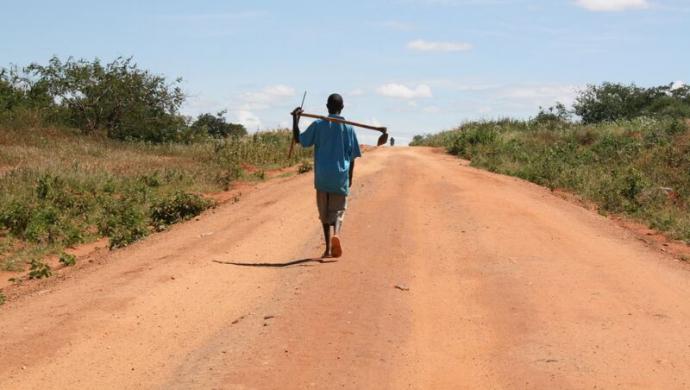World Bank Managing Director Launches Insecticide-Treated Bed Net Distribution Campaign
KIMBANGU, DR Congo 15th September, 2008: The green and white building is obviously new and equipped with the basic equipment needed for normal deliveries.
Sister Angela Kapitingana, head of the maternity ward (fødeafdelingen), proudly takes the visitors on a tour of the rooms.
The facility is clean. In a side room, which Sister Angela calls the preparation room, two young pregnant women, obviously at full term, are waiting to give birth. The two young women explain why they have complete confidence in this maternity ward at the Kimbangu Health Center.
For Tantine Nkento, the main reason is its proximity to her home and the maternity wards good reputation. For Ginette Bone, it has more to do with the widely-recognized skill of the maternity wards midwives.
The more affordable cost is undoubtedly another important factor. – A normal delivery without episiotomy costs CGF 9.000, or 18 US dollar, explains an administrative officer.
Malaria program brings hope to Kimbangu
It was at this health center, built with the support of the World Banks Multisectoral Emergency Reconstruction and Rehabilitation Program (PMURR) and which is now the pride and joy of Kimbangu, that World Bank Managing Director Ngozi Okonjo-Iweala, launched the insecticide-treated bed net distribution campaign on Friday, July 25.
Moved by the fact that young mothers at the hospital were losing their children to malaria, Okonjo-Iweala said combating malaria was a government priority that all DR Congo donors should support.
The figures are truly alarming: 60 to 100 million cases and 180.000 malaria-related deaths per year have been recorded, making it the leading cause of death in the DR Congo (former Zaire), especially among children under five.
Malaria is also responsible for 21,7 percent of absenteeism (fravær) from school and work in the DR Congo.
The mass insecticide-treated bed net distribution campaign is one of the Governments responses. It joins efforts in the area at antenatal coverage through intermittent preventive treatment and the cleaning up of the environment.
The World Banks involvement
The World Banks contribution entails support to strengthen the primary health care system by assuming responsibility for health centers in the Equateur province, and taking specific actions through the “malaria control” component of the Emergency Urban and Social Rehabilitation Project (EUSRB).
The EUSRB financed the distribution of two long-lasting insecticide-treated bed nets to each household in Kinshasa (approximately two million in all) to reduce malaria-related infant mortality.
The Bank is also providing assistance through the PARS project, through which another three million nets will be delivered to the DR Congo for its other provinces.
Approximately 20 million insecticide-treated bed nets are needed to provide satisfactory coverage for the entire country. The Bank supports the call to mobilize additional resources.
It is not the donors who will develop the DR Congo
The launch of this insecticide-treated bed nets campaign was the high point of a fruitful visit during which Ms. Okonjo-Iweala conveyed strong messages.
– It is not the donors who are going to develop the DR Congo, she told civil society, adding: – They have undoubtedly mobilized funds but the DR Congo has the full potential to develop its resources.
Ms. Okonjo-Iweala often reiterated the DR Congos tremendous potential for transforming wealth for the well-being of the population by making a number of rapid reforms.
She said Africans should play an increasingly important role in the development of their own countries by supporting good governance where corruption is not tolerated.
– I emphasize this point because it is the only way to mobilize the funds needed to accelerate growth, she said.
Identify sources of growth
The government should identify sources of growth and develop a growth strategy around sectors, according to Ms. Okonjo-Iweala.
DR Congos promising short-term sources of growth include mining, agriculture, and energy. Citing the example of the mining sector , Ms. Okonjo-Iweala indicated that the country could increase its resources fivefold, from 20 million to 100 million US dollar, if proper reforms are implemented.
Addressing the issue of the Chinese contracts, Ms. Okonjo-Iweala made a point of explaining that the World Bank welcomes the resources provided by the Chinese government.
It is, however, important, she said, to ensure that the provisions of any contracts between DR Congo and China are transparent, as is the case with traditional financing.
It is also important to ensure that the financial conditions governing these contracts do not compromise the attainment of the completion point of the Heavily Indebted Poor Countries (HIPC) initiative, she said, that could alleviate the debt burden, which is the equivalent of the current GDP .
Kilde: www.worldbank.org















